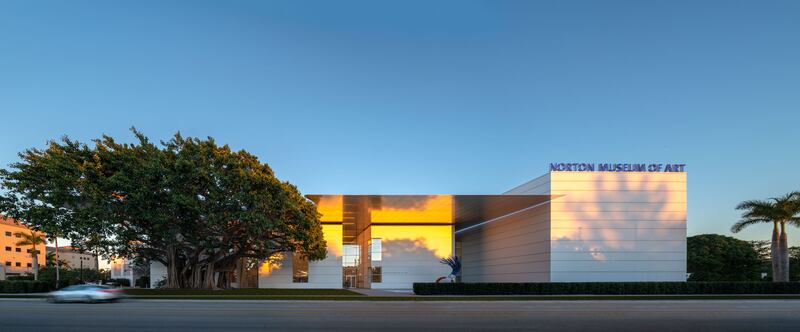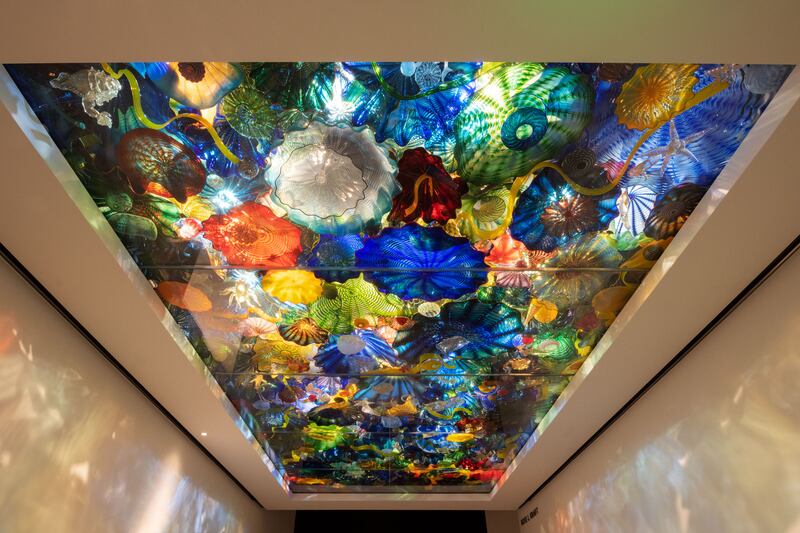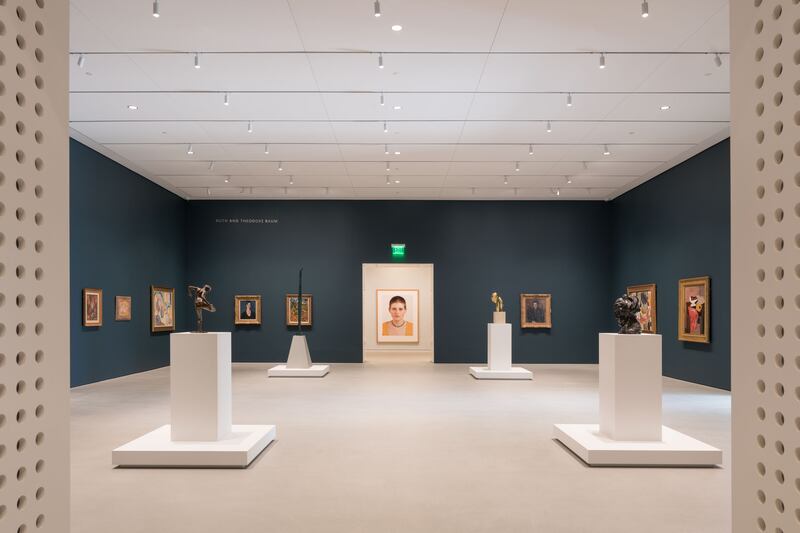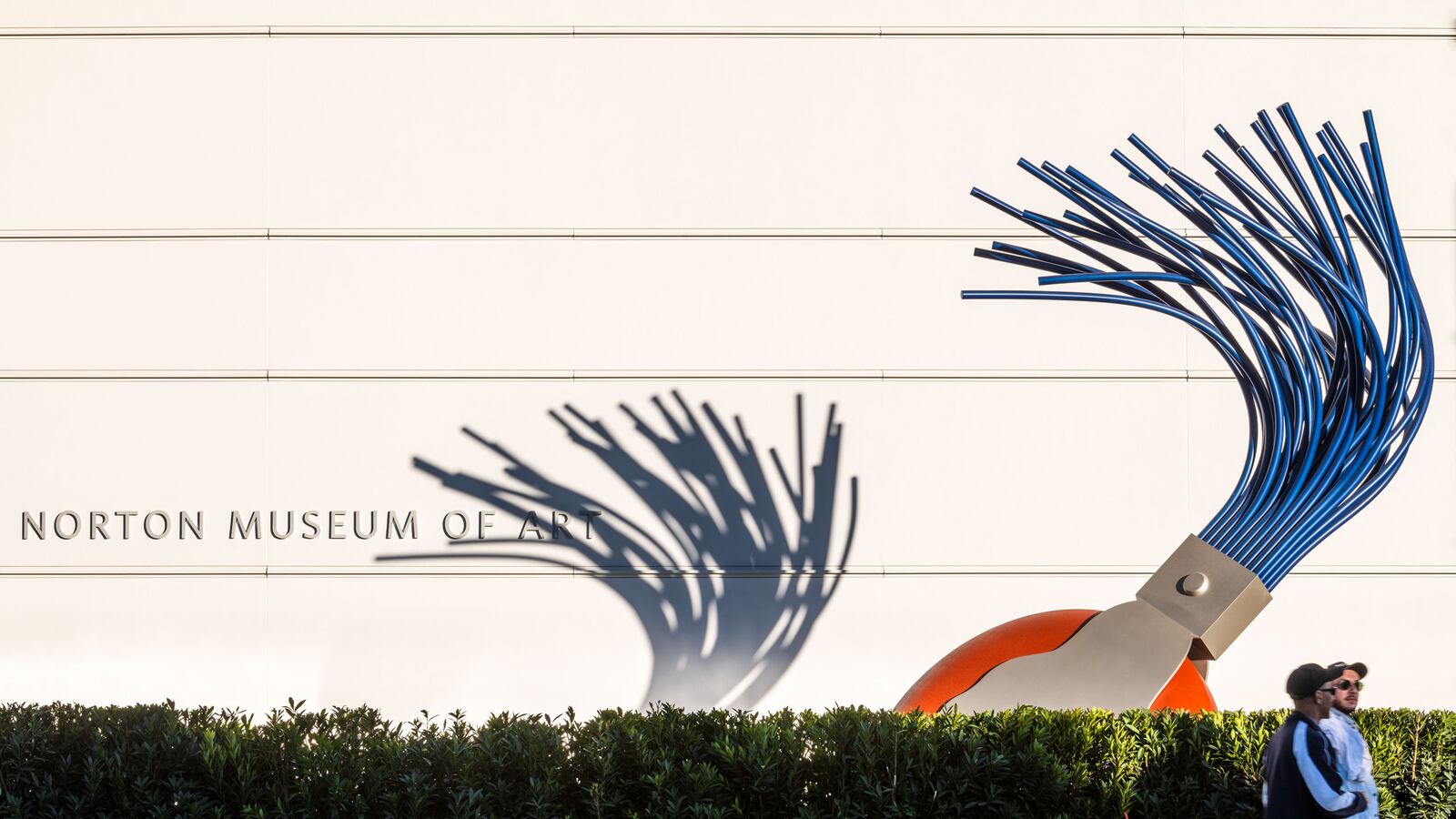Size isn’t everything, the saying goes, if they don’t know how to use it.
The same, I think, goes for art museums. The impressive collections at the Louvre, the Prado, the National Gallery (London and D.C.), the Met, Kunsthistorisches, etc., can often be too impressive, as in too overwhelming—an all-you-can-eat buffet when you just want a biscotti.
So I was excited when the folks at the Norton Museum of Art in West Palm Beach, Florida reached out about their massive $100 million renovation and expansion by Foster + Partners, which opens to the public this Saturday, February 9.
Opening in 1941, the Norton has always been a good museum with a small but well-curated collection (there is a lot to be said for museums that don’t try to overwhelm you). Housed in an Art Deco block of stone, the Norton was something of an anomaly in its neighborhood, a mid-century hipster that doesn’t really fit in.
The new Norton hopes to change that by becoming both an eye-catching destination (tourism is, after all, Florida’s core industry) and a bigger, more integrated part of its community. Achieving those goals is what makes a smaller museum stand out—places like the Philips or Barnes being great examples.

I toured the property just after Christmas while finishing touches were being made and art installed, so I can’t comment on the final result that is being unveiled this Saturday. But the building itself and the spaces created for the art were finished, and I chatted for an hour with the museum’s outgoing director, Hope Alswang, about her vision for the expansion and what the museum hopes to achieve. In a nutshell, she says, “We’re trying to build a great cultural institution in a place that’s still young.”
I don’t often love Foster projects—the shades-of-grey color scheme usually leaves me cold. But with the Norton, Foster and team have created a space that does everything possible to showcase art and create an environment conducive to interacting with it. It is filled with light, functional, and quietly clever. Outside, at the new entrance, the sole statement is the slick metal awning. There are no in-your-face architectural elements, and even the canopy is overshadowed by the magnificent 65-foot banyan tree it curves around.
Only time will tell if Alswang, the curators, and the architects succeeded in making the museum both an essential part of the community as well as an essential stop for visitors to Palm Beach—giving them something to visit besides the over-the-top Flagler Museum. The collection is certainly significant for a mid-size museum—running the gamut from Monet to Picasso to Chihuly to Cindy Sherman to a beautiful assembly of Chinese works.

Alswang, who came to the museum from the Rhode Island School of Design (RISD), is convinced they’ve pulled it off, and seeing it through her eyes is truly something as she wanders the space, gushing about the camera-less photography exhibition that will open with the museum or bubbling over about something as simple as the floor outlet design.
While I ogled the Chinese pottery collection, I ask her something that always crosses my mind when I view beautiful pieces: How do you get people to understand the works beyond their immediate aesthetic qualities?
"The best way to elucidate this sort of stuff,” she says, “is additional lectures, gallery talks, and having people, believe it or not, make a pinch pot."
But the thing Alswang showed me that excited me the most was not in the museum, but outside.

“We have a very adequate but undistinguished building,” she said, articulating one of the big complaints about the old place. “Cold and not people friendly… there’s nothing about this building that says Florida.” So one of the things she said to Foster about the new Norton was it should be Floridian, and most importantly, there should be a garden.
So now, on the southern side of the museum, there is a simple yet incredibly elegant colonnade running along the gallery space that opens up onto what will be a lush garden. Perpendicular to the gallery and opening up to the ocean will be the museum’s new restaurant.
Our hope, Alswang emphasizes, is “that when people go by they recognize it’s an important public building.” In that, they’ve certainly succeeded.






